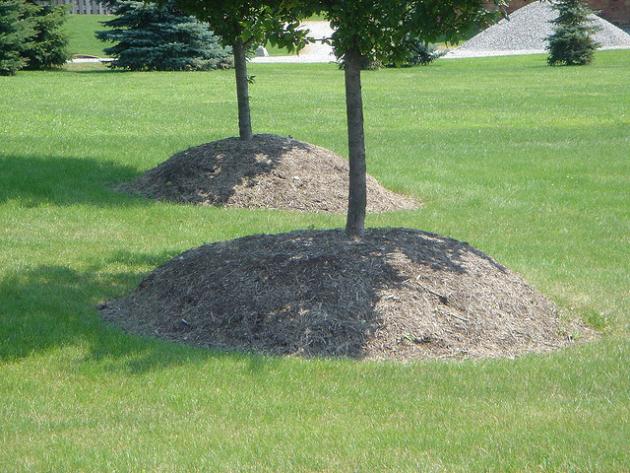By following some simple rules, mulch can be an effective way to conserve water, add organic matter to the soil, and keep annual weeds from germinating.
Organic mulches consist of plant material that eventually breaks down in the soil.
Common mistakes include applying a mulch layer that is too thick and mounding a mulch “volcano” around shrub and tree trunks. Overmulching with more than about 3 to 4 inches of organic mulch can cause a variety of problems.

Problems Created by Overmulching
- Over-mulching can create an anaerobic (low or no oxygen) environment that allows fungal diseases to develop in plant stems and roots (some are toxic to humans).
- Mulching at the too early in the spring can create water logged soils that may kill drought tolerant plants.
- Mulch applied too deeply in the fall can create a home for rodents which may feed on plant stems and trunks throughout the winter. Pull mulch away a few inches from the trunks of trees and shrubs.
- Roots may grow into the mulch and not the soil.
- Slugs and other insects may colonize thick mulch.
- Thick layers of sawdust and grass clippings compact easily and may prevent water from penetrating the soil.
Additional Resources:
West
Washington – Wood Chip Mulch: Landscape Boon or Bane?
Washington – The Myth of Pretty Mulch
Midwest
Missouri – Grass Clippings, Compost and Mulch: Frequently Asked Questions
Missouri – Mulches (pros and cons)
Nebraska – Mulch Problems Solved
Northeast
New Jersey – Problems With Over Mulching Trees and Shrubs
